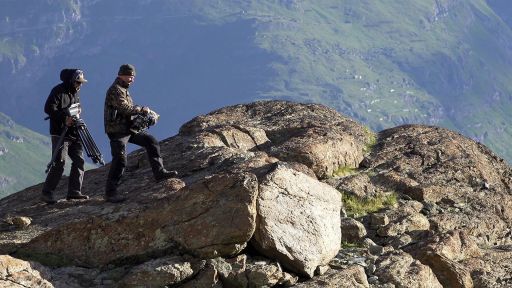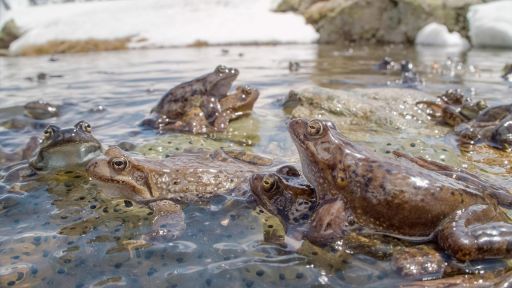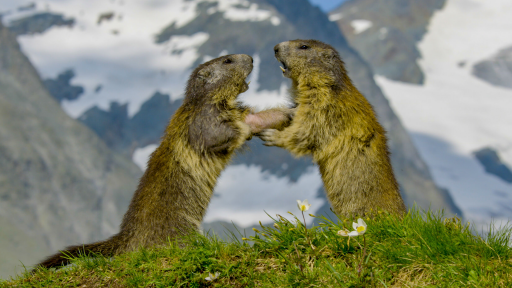Spanning 750 miles from the Mediterranean Sea to the Adriatic Sea, the Alps connect eight countries. From sea level to peaks rising higher than 12,000 feet, with many of the world’s environments located within the Alps’ boundaries, each mountain chain is more imposing and diverse than the next. Discover how Eurasian lynx, golden eagles, ibex, griffon vultures and more face extreme seasonal fluctuations – from the volatile thunderstorms and landslides of summer to the avalanches and frozen temperatures of winter – in this epic two-part documentary event. On every mountain slope, ridge or meadow, a natural world drama plays out as animals fight for survival in Europe’s majestic Alps.
In Part One of “The Alps,” enjoy the Alps in spring and summertime as newborn animals grow up to face the coming brutal winter.
Buzzworthy Moments:
- A male capercaillie leaps, dances and flashes his lush, iridescent feathers on a carefully selected stage in order to impress an enchanted female fan.
- Determined brown bears sniff out honey in a dead tree and brave vicious stings to taste their favorite treat. A few decades ago, there were only a few bears in the Alps due to overhunting; now, more than 100 wander throughout the terrain.
Noteworthy Facts:
- Male red deer shed their antlers after mating season. It takes 3-4 months for the stags grow new ones.
- At over 12 miles long and about a half-mile thick, the famous Aletsch valley glacier is the longest in the Alps, but due to climate change the Aletsch is shrinking and predicted to completely melt by the end of this century.



